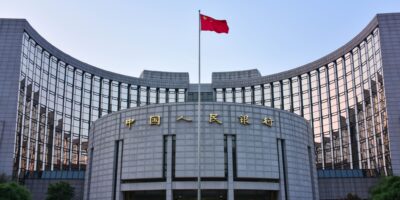A Vaccine Auction

The United States government has purchased hundreds of millions of doses of vaccines against Covid-19. How should these doses, initially scarce, be allocated to individuals over time? If the goal is to allocate efficiently — that is, without wasting any opportunity to make everyone better off — then the natural answer is: use a market. As long as the problems of efficiency and distributive justice are separable, one can leave vaccine allocation to a (thoughtfully designed) market while leaving it to elected officials to debate and pursue, at their own pace, the kind of distributive justice that they think their constituents deserve.
This essay proposes an efficient way to auction off vaccines. The proposal’s goal is to facilitate the discussion of merits and demerits of a market solution to vaccine allocation by putting forth an efficient alternative to the straw man of auctioning off the vaccine to the highest bidder.
Efficiency requires that each individual be able to express her urgency of inoculation through a bid. After all, no one apart from the individual herself knows how much she values the greater freedom afforded by the vaccine relative to continued social isolation. But, in a pandemic, there are also externalities. If infected, one can harm others: one’s colleagues, one’s employer, and one’s health insurer, private or public, among others. While one would do well for oneself by neglecting this harm to others, such neglect interferes with efficiency. Therefore, the auction I propose allows those affected by an individual’s inoculation to bid on that individual’s behalf, topping up her bid or, in some cases, shading it.
There are two building blocks to the proposal. One exploits the parallel between the vaccine allocation problem and the (well-understood) problem of assigning to advertisers the positions for sponsored links on the pages populated by online search results (Edelman, Ostrovsky, and Schwartz, 2007; Varian, 2007). Just as advertisers prefer their ads to appear earlier on the page, individuals prefer to be vaccinated sooner, to gain protection and the concomitant freedom to socialize sooner. The other building block is the observation that, just as the pivot Vickrey–Clarke–Groves (VCG) mechanism can solve the sponsored search problem, it can also solve the vaccine allocation problem.
The VCG mechanism has been around for half a century. The vaccine auction it begets contains no technical innovation. This lack of technical novelty is itself an important point of this essay. Because a compelling vaccine auction can be constructed using off-the-shelf techniques, there is really no excuse whatsoever for a priori exclusion of markets from the debate on how to best allocate vaccines.
The Auction
The proposed auction has the following defining features:
- Any individual and any organization (e.g., a government agency, a charity, or a firm) may bid. Individuals get vaccinated; organizations do not. A bidder can submit a bid to vaccinate anyone, not just herself. A bid is a real number, which can be positive or negative. A bid expresses the value the bidder assigns to vaccinating the person on whose behalf she bids with a vaccine that reduces a typical recipient’s mortality by one percentage point.
- Under the assumption that those who want to get vaccinated prefer to do so sooner, vaccines are allocated to the individuals in the descending order of the aggregate bids submitted on their behalf. That is, the individual with the greatest support as expressed by the sum of the bids submitted on her behalf gets the vaccine first; the individual with the second greatest support gets the vaccine second, and so on.
- Each bidder pays the externality that her bids impose on others by diverting the vaccine towards (or away from) those on whose behalf she bids. For instance, if a coffee shop’s bid on behalf of its employee Alice causes Alice and Bob to switch their adjacent positions in the vaccination order, then the coffee shop pays the cumulative cost of delayed vaccination that this switch imposes on Bob (as revealed by Bob’s bid on himself), on Bob’s family (as revealed by their bids on Bob’s behalf), on his health insurer, and on anyone else who may have bid on Bob’s behalf. Payments are distinct from bids.
A special case of the VCG mechanism, the vaccine auction inherits its properties:
- The auction allocates the vaccine efficiently. Efficiency prevails because the auction prices the externality that a bidder imposes on others when her bids influence the vaccination schedule.
- The auction is strategy-proof: regardless of what others do, no bidder can do better than to bid her true valuations. Strategy-proofness makes the auction easy to participate in and does not advantage those who are good at ”strategizing,” or “gaming” the auction, simply because there is no gain to be had from strategizing. In particular, Alice does not wish to “free ride” on others’ generous bids on her behalf by understating her true valuation for the vaccine. By virtue of divorcing payments from bids, the auction can be interpreted to optimally free ride on Alice’s behalf, so that Alice does not have to. For instance, if employer’s and health insurer’s generous bids on Alice’s behalf propel her to the very front of the vaccination queue, and if Alice’s bid of $100 on her own behalf makes no difference to this outcome, then the auction charges Alice nothing for her privileged position, as if she had bid zero.
- The auction’s format is necessary under rather weak conditions provided that one insists on efficiency and strategy-proofness. In particular, allowing bidders to bid on each other’s behalf is necessary.
To illustrate the richness of the bidding language, note that the auction permits a vaccine skeptic to bid a negative amount for his own vaccination, a nurse with virus-conferred immunity to bid zero, and a social dancer who simply cannot survive the solitary confinement in her tiny apartment to bid an exorbitantly large amount. The federal and the local governments are also heard. Their ethics may influence vaccine allocation, but they must put their money where their ethics is by bidding on behalf of, say, the elderly and the dispossessed.
The ability to bid on behalf of others enables individuals and organizations to internalize the externalities that vaccination entails. For instance, a firm at the helm of a company town may bid on behalf of its employees in order to accelerate herd immunity and avert costly lockdowns in the town. A susceptible individual who is allergic to vaccines may bid on behalf of her doorman, her housekeeper, and her hairdresser. A health insurance company (private or public) may bid on behalf of the most vulnerable among the insured (e.g., the elderly, the obese, and those suffering from chronic conditions) in order to avoid paying their hospitalization bills. While a hospital may bid negative amounts on behalf of prospective patients in the hope of harvesting hospitalization fees, these patients’ insurers would optimally bid to offset these negative bids. An airline or a coffee shop chain may bid on behalf of its loyal customers — and potential super-spreaders — in order to mitigate the threat they pose to other customers and to the company’s reputation.
The described auction generates revenue. To preserve bidders’ incentives, this revenue may not be promised to any bidder. Instead, the government may commit to channel the revenue towards retiring the national debt.
Some Practical Considerations
In spite of appearances, no epidemiological modeling is required to administer or participate in the auction. While the auction’s externality-based payments depend on the efficacy of the vaccine and on the evolution of the pandemic, neither of which is initially known, both can be computed ex-post. Then, auction payments can also be computed and assessed ex-post (e.g., using funds held in escrow). The added attraction of ex-post payments is that they are “fair” in the sense that bidders pay little for a vaccine that is inefficacious or arrives too late to make a difference.
One may be concerned about bidders being insufficiently motivated to discover how much they value the vaccine and submitting a “lazy” or “inattentive” bid (e.g., a lot of zeros). It turns out that (under appropriate assumptions), by virtue of being a VCG mechanism, the vaccine auction provides bidders with socially optimal incentives to discover their valuations (Bergemann and Välimäki, 2002). That is, inattention that is privately optimal is also socially optimal.
Another potential concern is bidder privacy. Alice may be upset if the timing of her vaccination reveals to the world how much she values her own and others’ lives. Indeed, Alice may even be upset if the timing of her vaccination keeps reminding her future self about her past valuations. There are two responses to this. One is that the timing of Alice’s vaccination depends on all bids submitted on her behalf. She can plausibly deny her own bid and credit others’ bids for the timing. Another response is that the auction can be modified by carefully injecting randomness into the auction’s outcome (Huang and Kannan, 2012). This modification would admit a little inefficiency in exchange for added privacy while remaining strategy-proof.
References
Bergemann, Dirk and Välimäki, Juuso, “Information Acquisition and Efficient Mechanism Design,” Econometrica 70, 3 (2002), pp. 1007–1033.
Edelman, Benjamin, Ostrovsky, Michael, and Schwartz, Michael, “Internet Advertising and the Generalized Second-Price Auction: Selling Billions of Dollars Worth of Keywords,” American Economic Review 97, 1 (2007), pp. 242–259.
Huang, Zhiyi and Kannan, Sampath, “The Exponential Mechanism for Social Welfare: Private, Truthful, and Nearly Optimal,” in EEE 53rd Annual Symposium on Foundations of Computer Science (2012), pp. 140–149.
Pancs, Romans, “A Vaccine Auction,” (2020).
Varian, Hal R., “Position Auctions,” International Journal of Industrial Organization 25 (2007), pp. 1163–1178.










